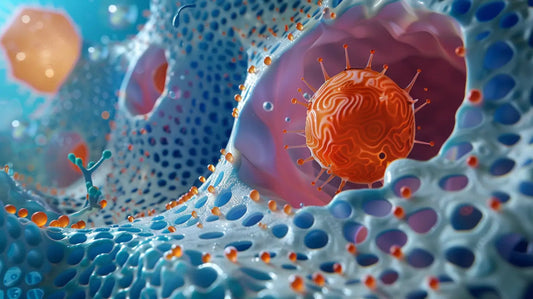The Best Water to Drink: A Journey Through Time and Nature
Updated
John Smith
Staff Writer
Our Commitment to Accuracy and Objectivity
Ocemida is committed to delivering reliable and unbiased information. Our editorial team, comprised of experienced editors and medical experts, meticulously reviews every article and guide to ensure the content is accurate, up-to-date, and free from bias.
Rigorous Fact-Checking Process
To uphold the highest standards of accuracy, we adhere to the following fact-checking guidelines:
Trusted Sources: We only cite reputable sources, such as peer-reviewed journals, government reports, academic and medical associations, and interviews with credentialed healthcare professionals.
Evidence-Based: All scientific claims and data are supported by at least one credible source. Each article includes a comprehensive bibliography with full citations and links to the original sources.
Internal Linking: While we may include internal links to other relevant Ocemida pages for better navigation, these links are never used as primary sources for scientific information.
Expert Review: A member of our medical and scientific expert team provides a final review of the content and cited sources for all articles and product reviews related to medical and health topics.
By following these rigorous standards, Ocemida strives to provide readers with reliable and informative content.
Share with a friend
We all know water is essential for life, but have you ever stopped to wonder what kind of water is truly best for us to drink? In a world brimming with bottled water brands, fancy filters, and conflicting health advice, it's easy to feel lost.
Let's take a step back and explore this question by looking at our history, understanding natural water sources, and examining how our relationship with this vital resource has evolved over time.
The Natural Water Sources for Humans
Rainwater: Nature's Distillation Process
For millennia, humans have relied on rainwater as a primary source of drinking water. Rainwater is essentially distilled water, formed through the natural process of evaporation and condensation. This process leaves behind many impurities, resulting in water that is:
- Free from most contaminants
- Slightly acidic (pH around 5.6) due to dissolved carbon dioxide
- Low in mineral content
Spring Water: Earth's Natural Filtration System
Springs have been revered as sources of pure water throughout human history. As water percolates through layers of rock and soil, it undergoes a natural filtration process, emerging as spring water with unique characteristics:
- Often slightly alkaline (pH > 7) due to dissolved minerals
- Rich in various minerals depending on the geological composition
- Some springs naturally contain dissolved hydrogen
Fruits and Vegetables: Nature's Water Bottles
Our ancestors didn't always have access to rivers or springs. They often relied on water-rich fruits and vegetables as a source of hydration. This water source is:
- Naturally alkaline
- Rich in vitamins and minerals
- Provides additional nutritional benefits
The Changing Landscape of Water Consumption
Historical Water Consumption
For most of human history, people drank water from natural sources without additional treatment. Let's look at a timeline of water consumption:
| Era | Primary Water Sources |
|---|---|
| Prehistoric (before 10,000 BCE) | Rivers, lakes, rainwater |
| Ancient Civilizations (3000 BCE - 500 CE) | Wells, aqueducts, cisterns |
| Middle Ages (500 - 1500 CE) | Wells, springs, rainwater collection |
| Industrial Revolution (1760 - 1840) | Public water systems emerge |
| Modern Era (1900 - present) | Treated municipal water, bottled water |
Recent Changes in Water Consumption
In the last century, our approach to water consumption has undergone significant changes:
- Municipal Water Treatment: Introduction of chlorination and other purification methods.
- Bottled Water Industry: Emergence and rapid growth since the 1970s.
- Home Filtration Systems: Popularization of countertop and under-sink filters.
- Specialty Waters: Alkaline water, hydrogen-rich water, and other enhanced waters.
Understanding the Ideal Water for Human Consumption
Based on our exploration of natural water sources and historical consumption patterns, we can draw some conclusions about the ideal water for human consumption.
Key Characteristics of Ideal Drinking Water
- Purity: Free from harmful contaminants
- Mineral Content: Contains beneficial minerals
- pH Level: Slightly alkaline
- Hydrogen Content: Presence of dissolved hydrogen
Let's compare these characteristics with different water sources:
| Water Source | Purity | Mineral Content | pH Level | Hydrogen Content |
|---|---|---|---|---|
| Rainwater | High | Low | Slightly Acidic | Low |
| Spring Water | High | High | Slightly Alkaline | Varies |
| Fruit/Vegetable Water | High | High | Alkaline | Low |
| Distilled Water | Very High | Very Low | Neutral | Low |
| Alkaline Water | Varies | Varies | Alkaline | Low |
| Hydrogen-Rich Water | Varies | Varies | Varies | High |
The Ideal Water: A Natural Synthesis
Considering the natural sources of water that humans have consumed for millennia and the beneficial properties of each, we can conclude that the ideal drinking water would have the following characteristics:
- Purity of distilled or rainwater
- Mineral content similar to spring water
- Slightly alkaline pH
- Enriched with dissolved hydrogen
This ideal water closely resembles what you might find in some natural springs, combining the best aspects of various water sources found in nature.
Achieving the Ideal: Modern Approaches
While finding a natural spring that ticks all our boxes might be as rare as stumbling upon a unicorn, don't worry! Modern technology has our backs. We can recreate this ideal water right in our own homes. Here's a simple two-step process that mimics nature's best:
- Start with Hydrogen-Rich Water:
- Begin with distilled water for purity.
- Use a hydrogen water bottle to infuse it with dissolved hydrogen.
- This process gives us pure water with the potential benefits of hydrogen, similar to some natural springs.
- Alkalize and Mineralize:
- Take your hydrogen-rich water and pass it through an alkaline filter.
- The Ocemida alkaline stick is a great option for this step.
- This adds essential minerals and raises the pH to a slightly alkaline level.
Voila! You've just created water that combines the best of what nature offers: the purity of distilled water, the hydrogen content of some pristine springs, and the mineral-rich, slightly alkaline profile that our bodies seem to love.
Conclusion
Our journey to find the best water to drink has taken us from ancient streams to modern kitchen counters. It's fascinating to see how we've come full circle – using technology to recreate the beneficial properties of natural water sources that have nourished humanity for millennia.
As we navigate the sea of water options available today, it's reassuring to know that we can create water that honors our evolutionary history while leveraging modern innovations. Whether you're filling up your reusable bottle for a hike or preparing your morning coffee, remember that the best water is a beautiful blend of nature's wisdom and human ingenuity.
So, the next time you take a sip of water, spare a thought for the incredible journey it's been on – both through natural processes and human discovery. Here's to staying hydrated with water that's not just good, but truly great for our bodies!
Table of Contents










































